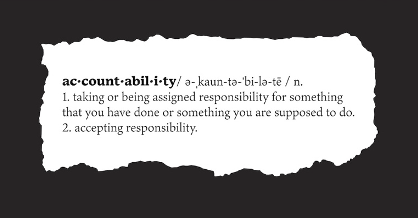In organizational dynamics, the journey from joining a company to feeling a sense of belonging—and ultimately accepting accountability and ownership—can be transformative. This process is also gradual and evolutionary. Each step of this journey is unique. However, the associated stages and behaviours are often mistaken as synonymous. However, each requires distinct actions from managers and direct reports; each step presents challenges, nuances, and objectives. Understanding these stages is essential for fostering a positive employee experience that aligns with both individual and organizational values, purpose and goals.
Belonging: The Foundation
 Belonging is the initial stage where an individual feels a positive connection with the organization. It occurs when an employee’s personal values and behaviours align with the company’s, leading them to perceive its purpose as meaningful. This moment of synthesis and balance. The anticipated alignment encourages employees to accept the job offer and embark on their journey. From day one, employees conduct a reality check to determine if the promises made about the work environment during the interview match their actual experience. At this initial stage, the employee is present but does not yet feel a sense of belonging. Belonging is not just about being present; it involves feeling included valued, and making a meaningful contribution beyond one’s role.
Belonging is the initial stage where an individual feels a positive connection with the organization. It occurs when an employee’s personal values and behaviours align with the company’s, leading them to perceive its purpose as meaningful. This moment of synthesis and balance. The anticipated alignment encourages employees to accept the job offer and embark on their journey. From day one, employees conduct a reality check to determine if the promises made about the work environment during the interview match their actual experience. At this initial stage, the employee is present but does not yet feel a sense of belonging. Belonging is not just about being present; it involves feeling included valued, and making a meaningful contribution beyond one’s role.
In the first few weeks, employees transition from simply showing up and being present to a feeling of actual belonging. Key elements that facilitate this include:
- Alignment of Values: Employees feel that their personal values resonate with those of the company
- Meaningful Purpose: The organization’s purpose is perceived as significant and impactful, offering clarity on contributions
- Contribution: Employees believe their work aids in achieving the company’s goals and is tied to a larger purpose
- Capability and Freedom to Learn: Employees feel safe to ask questions and learn within cultural boundaries
- Feeling They Can Contribute: Employees think mutual respect and are part of the team
Sarah’s High Expectations
I recall Sarah, a highly sought-after market researcher. She was excited to join her firm because of the promises made during the interviews that made her believe she was going to greener pastures, and the hiring manager said she was excited to have her join because of her innovative marketing strategies. On her first day, her manager was absent from the office, and there was no onboarding, only an explanation of policies and procedures. As the weeks progressed, she realized there was a strong sense of competition during team meetings, and her ideas were dismissed as “too risky.” By the middle of the second month, Sarah concluded that the company’s values of “innovation” and “employee autonomy” were not the company values, but just slogans on the wall. After 90 days, she left, having already found another job with a competitor.
Signs that a new employee is still just present or a long-term employee has regressed include feelings of isolation and apprehension about contributing ideas or asking questions. These employees do the very minimum to get by; they exist on the team’s margins and hesitate to contribute ideas. These factors reduce job satisfaction and productivity, making them a serious retention risk. According to several sources, nearly 30% of job seekers leave within the first 90 days, and around 40% of employee turnover occurs within the first year. The result is a significant loss of financial resources, productivity, and ability to meet customer expectations.
Accountability: Taking Responsibility
 Accountability is the next stage, where individuals take responsibility for their actions and outcomes. It involves a deeper commitment to one’s work than merely completing tasks. Employees in this stage move beyond just feeling they belong; they actively engage in learning processes, seek information, ask questions, and strive to understand their roles and the organization. They are open to feedback and willing to learn from experiences, actively seeking guidance from those who are more experienced colleagues.
Accountability is the next stage, where individuals take responsibility for their actions and outcomes. It involves a deeper commitment to one’s work than merely completing tasks. Employees in this stage move beyond just feeling they belong; they actively engage in learning processes, seek information, ask questions, and strive to understand their roles and the organization. They are open to feedback and willing to learn from experiences, actively seeking guidance from those who are more experienced colleagues.
Challenges in achieving accountability include:
- Misaligned Expectations: Differences in managers’ and employees’ definitions of accountability
- Blame Culture: Shifting blame rather than accepting responsibility can hinder accountability
- Lack of Clarity: Unclear expectations and goals can lead to confusion over accountability
I have observed that these employees realize they do not have full autonomy because they perceive their actions as potentially being questioned or feel that if things don’t go as expected, their manager will be playing the blame game. As a result, they limit their accountability to “I will do the work and achieve my commitments to the best of my capability,” allowing them to engage in excuse management
Alex’s Journey to Accountability
I recall Alex, a new immigrant who joined High Tech Cloud as a junior software developer, believing he had a chance to make an impact. Initially thrilled by the company’s innovative reputation, Alex soon faced unexpected challenges.
Alex’s team lead, Jamie, assigned a complex project without providing clear guidelines. Uncertain but determined, Alex decided to take the initiative and approached Jamie for clarification on project goals, but Jamie was distracted and unable to give Alex a proper answer. Undiscouraged, Alex sought advice from senior colleagues, documenting all decisions. When the project hit a snag, Alex presented the issue to Jamie along with potential solutions instead of pointing fingers. Jamie was impressed by Alex’s proactive approach and praised his courage and initiative, apologizing for being unhelpful and assuring that it would not recur. Jamie provided clearer guidance and made some suggestions, leaving the course of action up to Alex.
The project was completed successfully. In the review meeting, Alex openly discussed successes and areas for improvement, demonstrating learning and growth. He displayed accountability and responsibility to his team and boss, actively seeking information and striving for improvement, and he did not make excuses.
Ownership: Taking and Owning Actions
 Ownership represents the highest level of belonging, where employees feel complete autonomy to initiate and act on ideas. They are invested in outcomes, embody stewardship over their work, and make decisions that benefit the organization. Trust is crucial; employees must know that management views setbacks as learning opportunities rather than career-ending events. They have positive interactions based on trust and respect, supporting others in their work.
Ownership represents the highest level of belonging, where employees feel complete autonomy to initiate and act on ideas. They are invested in outcomes, embody stewardship over their work, and make decisions that benefit the organization. Trust is crucial; employees must know that management views setbacks as learning opportunities rather than career-ending events. They have positive interactions based on trust and respect, supporting others in their work.
The ownership stage involves:
- Autonomy: Employees are empowered to make independent decisions
- Involvement: Employees participate meaningfully in decision-making, feeling their input is valued
- Transparency: Clear communication about company goals helps employees see their role in making meaningful contributions
Taking ownership shows that employees feel secure and accepted, creating opportunities for further advancement. When people take full ownership, they do not say, ‘to the best of my capability.’ Instead, they do whatever it takes to fulfill their commitment
Behaviours of Leaders That Enable Progression
Leaders play a crucial role in this progression by adopting specific behaviours:
- Empowerment: Providing tools, resources, and autonomy
- Trust: Building mutual trust through transparency and consistency
- Feedback: Offering regular, constructive guidance
- Inclusivity: Encouraging participation in decision-making
- Welcoming Atmosphere: Providing a warm welcome and encouraging connections
- Support and Assistance: Offering guidance and resources to help newcomers navigate roles
- Clear communication: clearly communicating expectations and responsibilities
From Ownership and Back to Belonging
These observations stem from my experiences with employees, leaders, and coworkers over five decades. Notably, I consulted with a major airline’s aircraft maintenance division. The CEO ensured transparency, inclusivity, and employee autonomy. He required each manager and supervisor to involve a union representative in decision-making. Without fail, when a technician declared a plane unsafe for flight, despite pressure from other departments, he supported the technician’s decision and resisted financial or other pressures. This approach instilled in each employee the confidence that they had complete autonomy over their responsibilities, leading to continuous improvements and exceptional safety record.
One day, a mechanic entered the CEO’s office and was welcomed despite a meeting in progress. The mechanic pointed out that he had discovered the same fuse, which cost hundreds of dollars from the plane manufacturer, was being sold at a lock hardware store for under $10. The CEO appreciated this insight and said he would address the concern with the aircraft manufacturer. After meeting with the aircraft manufacturer to inquire about the significant cost difference, he approached an employee at the employee location to explain the reason for purchasing the fuse from the aircraft manufacturer.
The CEO’s leadership ensured that employees stayed focused, appreciated everyone’s ideas and questions, and respected their autonomy in deciding how to approach their work responsibilities.
During his tenure, the airline achieved its goal of being one of the safest airlines in the world. However, soon after his departure, the lack of similar leadership causes a shift back to mere belonging, illustrating the importance of sustaining specific leadership behaviours to foster ownership.
Conclusion
The journey from belonging to accountability to ownership is nuanced, with each stage requiring distinct behaviours and conditions. Understanding these differences is essential for fostering a positive and productive organization. Without proper encouragement from coworkers and managers, employees may struggle to progress; conditions that enhance isolation and exclusion can lead to regression into a feeling of isolation. By recognizing the characteristics of each stage and implementing supportive leadership behaviours, organizations can assist employees, resulting in a more engaged, responsible, and invested workforce.
The journey from belonging to accountability and finally to ownership is transformative, requiring careful consideration of each stage’s unique needs. By understanding and supporting this progression, organizations can establish a solid foundation for long-term success, leading to higher retention and increased productivity.
Remember, don’t expect employees to act with accountability unless the leader does so.
 DS Cohen & Associates
DS Cohen & Associates
